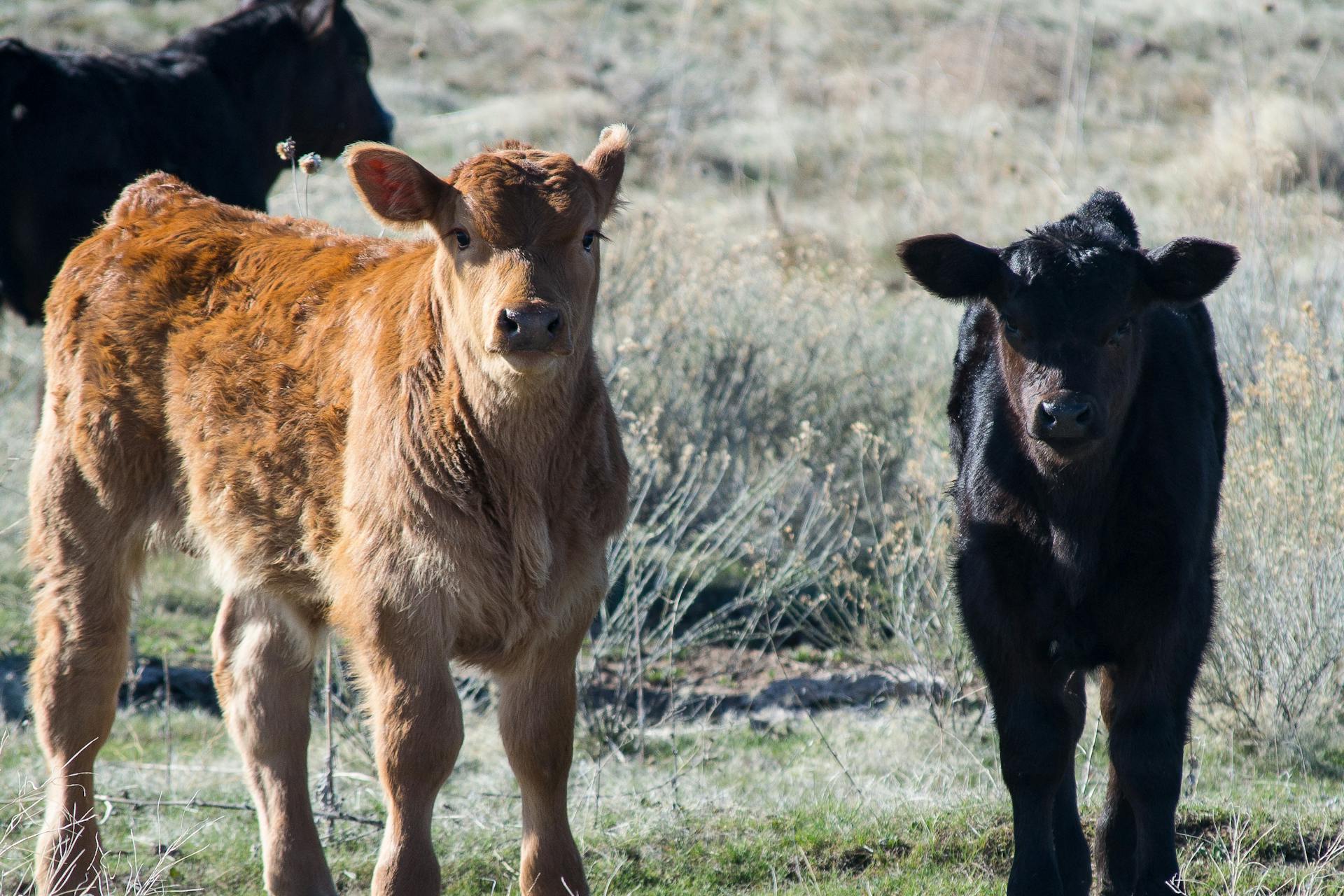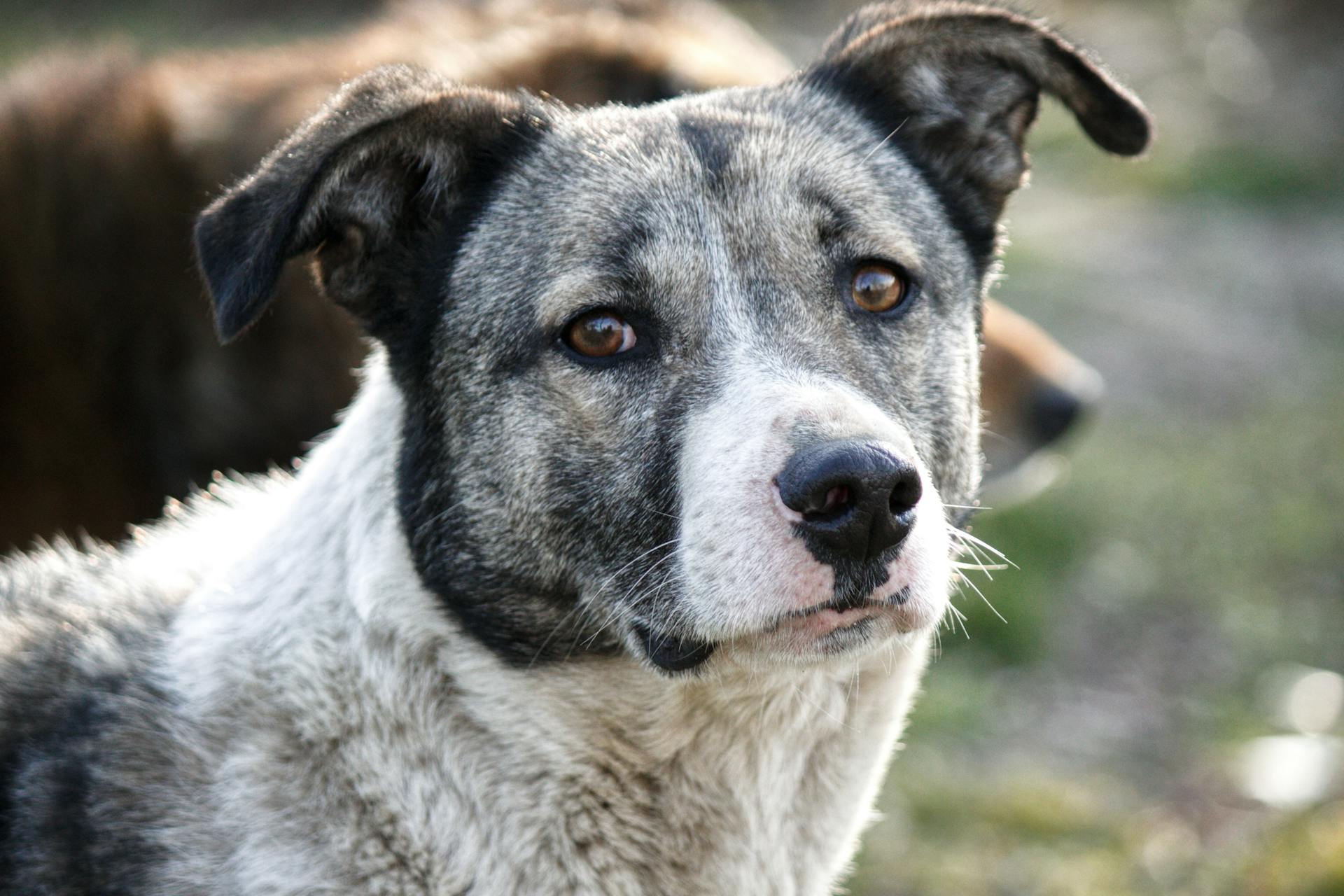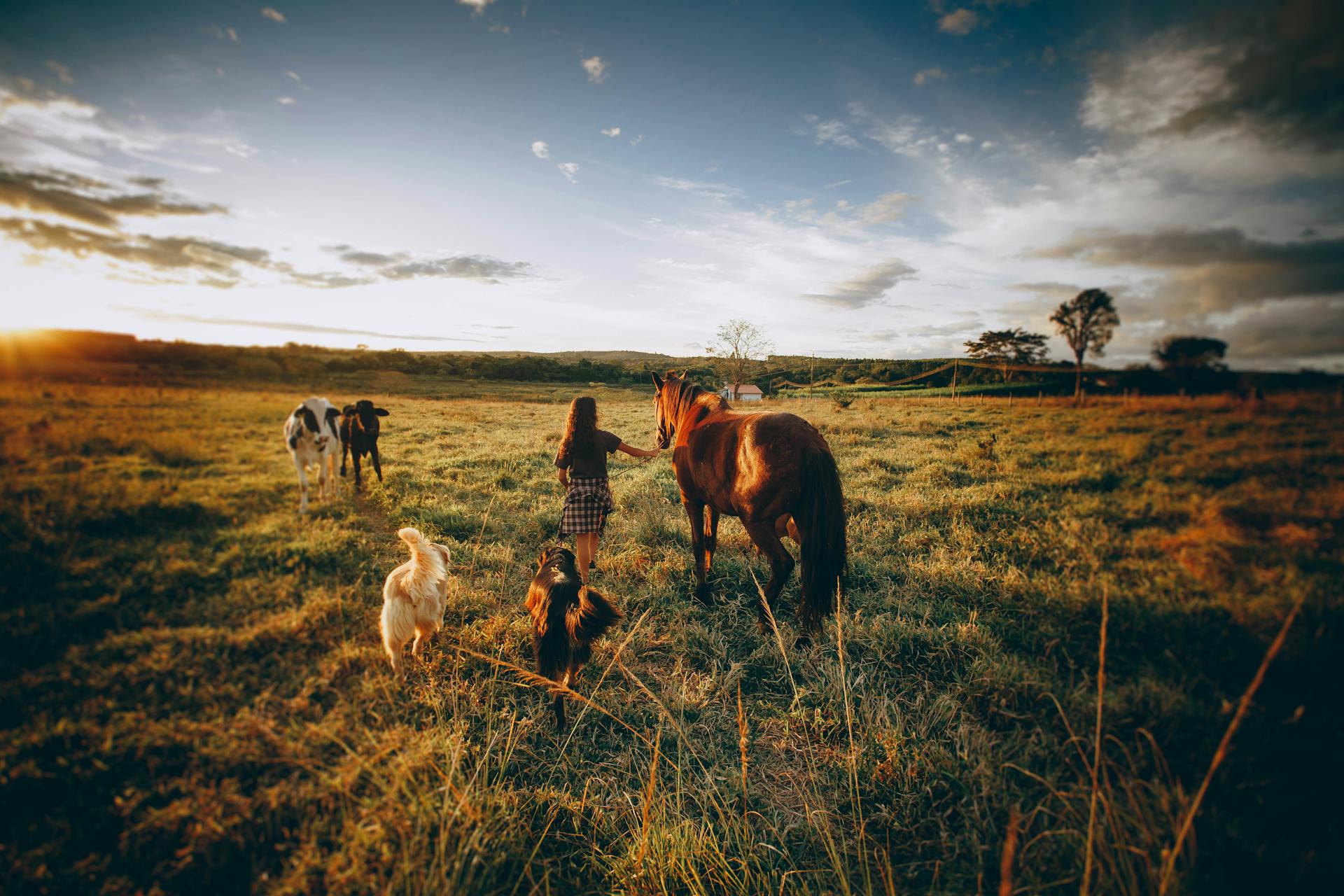
Cattle dogs are incredibly intelligent and active animals, requiring plenty of exercise and mental stimulation to prevent boredom and destructive behavior. They need at least 1-2 hours of physical activity daily.
With their strong herding instincts, cattle dogs are naturally inclined to chase and gather. This trait makes them excellent working dogs on farms and ranches.
Breed Characteristics
Cattle dogs are highly intelligent and trainable, which is essential for their role as working dogs on farms and ranches. They excel at learning commands and tasks quickly.
Their high energy levels require regular exercise, ideally 1-2 hours of physical activity per day, to keep them happy and healthy. This can include running, playing fetch, or going on long walks.
Cattle dogs are naturally protective of their families and territories, making them excellent watchdogs. However, they can be wary of strangers, so socialization is crucial from an early age.
Their strong herding instincts often lead them to chase after children, so close supervision is necessary when they're around kids. This is especially true in areas with limited space or multiple pets.
Cattle dogs are generally loyal and loving companions, forming strong bonds with their owners. With proper care and attention, they can thrive as beloved family pets.
Broaden your view: Dog Names for Strong Dogs
Care and Maintenance
To keep your Australian Cattle Dog happy and healthy, it's essential to provide a proper outlet for their natural energy and bright mind. They need daily activity and training, which will take more time than grooming but are happy to take up exercising with you.
Their hard work and people-pleasing in their DNA don't make the breed low maintenance. You should supervise your pet as you would a toddler, keeping doors closed, picking up after yourself, and blocking off rooms as necessary to keep them out of trouble.
A consistent routine care is crucial for your Heeler's well-being. Here are some key points to keep in mind:
- Supervise your pet as you would a toddler.
- Brush their coat at least once a week, or more often when they're shedding.
- Brush their teeth at least twice a week.
- Clean their ears weekly.
- Keep their diet consistent and don't give them people food.
- Exercise them regularly, but don't overdo it at first.
It's also important to remember that Australian Cattle Dogs generally have good teeth, so brushing them regularly will keep them perfect.
Diet
Diet is a crucial aspect of your Australian Cattle Dog's care and maintenance.
To ensure your dog gets the nutrients they need, feed a high-quality diet appropriate for their age.

Aim to feed 1.5 to 2.5 cups of high-quality dry food per day, divided into two meals.
Dietary needs vary depending on your dog's size, age, build, metabolism, and activity level.
Australian Cattle Dogs are highly active, so diets and foods high in protein are best.
Don't give your dog people food, as it can lead to an unbalanced diet.
You can check if your dog is overweight by giving them the eye test and the hands-on test: look down at them and see if you can spot a waist, then place your hands on their back to feel their ribs.
Remember, every dog is different, so consult with your veterinarian to determine the best diet for your Australian Cattle Dog based on their individual needs.
At Home Care
Australian Cattle Dogs need a lot of attention and care to stay happy and healthy.
Their diet is crucial, and they should be fed a high-quality food that's suitable for their age. Don't give them people food, as it can lead to digestive issues.

To keep their teeth clean, brush them at least twice a week, and consider daily brushing for optimal oral health.
Regular exercise is a must, with a daily routine that includes at least an hour of physical activity. This can be a combination of walks, runs, and playtime in the yard.
Their coat needs some maintenance, but it's not too high-maintenance. Brush them at least once a week, and more often during shedding season. Bathe them as needed, and trim their nails monthly.
To keep them out of trouble, supervise them closely, especially in the early stages. Keep doors closed, pick up after yourself, and block off rooms as necessary.
Here's a quick rundown of their grooming needs:
- Brush at least once a week, and more often during shedding season.
- Bathe about once a month.
- Brush teeth daily for optimal oral health.
- Trim nails monthly, or when they get too long.
By following these simple tips, you can help keep your Australian Cattle Dog happy, healthy, and well-groomed.
Health and Wellness
Australian Cattle Dogs are generally healthy, but like all breeds, they're prone to certain health conditions. Not all Australian Cattle Dogs will get any or all of these diseases, but it's essential to be aware of them if you're considering this breed.
Progressive Retinal Atrophy (PRA) is a family of eye diseases that involves the gradual deterioration of the retina. Early in the disease, affected dogs become night-blind; they lose sight during the day as the disease progresses. Many affected dogs adapt well to their limited or lost vision, as long as their surroundings remain the same.
Hip Dysplasia is an inherited condition in which the thighbone doesn't fit snugly into the hip joint. Some dogs show pain and lameness on one or both rear legs, but others don't display outward signs of discomfort. X-ray screening is the most certain way to diagnose the problem.
Deafness is an inherited condition in the Australian Cattle Dog, but it can be tested for while the puppies are very young. Deaf dogs should not be bred.
Here are some common health issues to look out for in Australian Cattle Dogs:
- Progressive Retinal Atrophy (PRA)
- Hip Dysplasia
- Deafness
Regular veterinary check-ups and genetic testing can help identify these conditions early on, allowing for proper treatment and care. By being aware of these potential health issues, you can take steps to prevent or manage them, ensuring your Australian Cattle Dog lives a happy and healthy life.
Training and Behavior
Consistent training is crucial for Australian Cattle Dogs, as they can be stubborn and willful at times. Positive reinforcement techniques, such as treats, praise, and playtime, work well for this breed.
Australian Cattle Dogs are highly intelligent and can be trained with ease, but they require constant mental and physical activity to prevent boredom and destructive behavior. They need to be kept busy, and tired, to prevent them from getting into trouble.
Proper socialization early on is also essential to ensure they become well-adjusted adults. This can be achieved through exposure to new experiences, people, and environments, and enrolling them in puppy kindergarten classes or training sessions.
Trainability
The Australian Cattle Dog is an intelligent breed that thrives on mental and physical stimulation. They're capable of controlling a herd without direction from their master, showcasing their exceptional intelligence.
To train an Australian Cattle Dog, consistency is key. Consistent, positive training helps control their independent streak, and they respond well to rewards like treats, praise, and playtime with toys.
These dogs can be stubborn at times, but with confident pet parents who understand their needs, they're easy to train. A combination of brilliance and boredom is not a good mix, so providing them with plenty of activities and exercise is essential.
Proper socialization early on is crucial to ensure they become well-adjusted adults. Enrolling them in a puppy kindergarten class or exposing them to new experiences in a safe and calm manner helps polish their social skills.
Australian Cattle Dogs are naturally protective of their pack, but with consistent training, they can learn to control their aggression and become well-behaved family members.
Check this out: How to Become a Trainer of Service Dogs
Alone Time
Cattle Dogs can get antsy when left home alone, and they'll turn to destructive behaviors to pass the time.
They may resort to nuisance barking and destructive chewing, which can be minimized with crate training.
This breed should not be left alone for more than an hour or two.
Family Life
Blue Heelers are excellent family companions, but they do require early training to address nipping tendencies.
Their herding instincts may lead them to try herding children, so positive reinforcement training techniques are effective in managing this behavior.
Australian Cattle Dogs are best suited for families with older kids who have experience with active dogs.
This breed's herding instinct is so strong, they are known to 'corral' rambunctious little kids through forceful barking and nipping at heels.
Adults should always supervise playdates between kids and their four-legged friends.
To be good with other dogs and cats, Cattle Dogs must be socialized with them from an early age so they accept them as pack members.
A Blue Heeler's exercise needs are significant, requiring at least 2 hours of exercise daily, preferably in a fenced yard or other safe area.
Here's a quick rundown of exercise needs for Cattle Dogs:
They are also very active indoors and need plenty of toys and activities to keep them occupied.
A Unique Breed
Australian Cattle Dogs are a unique breed that can make a wonderful companion. They're well-suited as a family dog or working dog, and they have plenty of stamina to keep up with an active lifestyle.
Their confident and steady nature makes them fearless, but it's essential to socialize them properly to prevent overprotectiveness. If not socialized, they can become aggressive toward other animals and overprotective of their family and territory.
With a strong herding instinct, they may chase cars and small animals, so a large fenced yard is a must. They're also determined and have a mind of their own, which can be both a blessing and a curse.
Here are some key characteristics to consider:
- Well suited as a companion, family dog, or working dog
- Confident, steady, and fearless
- Plenty of stamina
- Has a short, easy-to-care-for coat
- Small, but sturdy
With proper care and attention, Australian Cattle Dogs can live up to 12-13 years, providing a loyal companion for many years to come.
For more insights, see: 100 Years Ago Original Boston Terrier
Breed Standards and Recognition
The Australian Cattle Dog is a breed that's deeply rooted in history and functionality. It was developed in the 1800s to manage large herds in the Australian Outback.
The breed's rugged herding skills were shaped by its ancestors, including the Blue Smooth Highland Collie and the Dingo. This unique combination of breeds allowed the Australian Cattle Dog to thrive in harsh environments.
The Australian Cattle Dog's temperament and working skills were further refined through crosses with other breeds, such as the Bull Terrier, the Dalmatian, and the Working Kelpie.
Breed Standard & History
The Australian Cattle Dog was bred to herd cattle on large ranches in the Australian Outback. They were instrumental in helping ranchers expand the Australian beef industry.
Their original ancestors were brought from England, but they weren't well-suited to the harsh environment. To create a more rugged herding dog, breeders crossed them with Dingos, Australia's wild dogs.
Thomas Hall is credited with creating the first ancestors of today's ACD by crossing Blue Smooth Highland Collies with Dingos. The breed's working skills and temperament were refined over time through crosses with other breeds.
The American Kennel Club (AKC) officially recognized the Australian Cattle Dog in 1980. The breed's name was previously known as the Australian Heeler, then later as the Australian Cattle Dog.
The Australian Cattle Dog's working style is characterized by nipping at the heels of cattle to move them along. This herding style earned them the nickname "Heelers".
The breed's popularity grew over time, and they became known as Blue Heelers due to their blue-colored coats. They were especially popular in cattle runs in Queensland, where they were given the name Queensland Heelers or Queensland Blue Heelers.
Robert Kaleski took up breeding Blue Heelers in 1893 and started showing them in 1897. He drew up a standard for the breed, basing it on the Dingo.
The Kennel Club of New South Wales approved Kaleski's standard in 1903. The breed's name was eventually changed to the Australian Cattle Dog, which is the name now accepted as official throughout Australia and elsewhere.
For more insights, see: American Kennel Club Lancashire Heeler
AKC Breed Category
The American Kennel Club (AKC) recognizes over 200 breeds of dogs, which are grouped into seven distinct breed categories. The AKC breed categories are a way to organize and understand the diversity of dog breeds.
The Sporting Group includes breeds that were originally bred for hunting and retrieving game, such as the Labrador Retriever and the Golden Retriever. These breeds are known for their energetic and athletic nature.
The Hound Group consists of breeds that were bred for their keen sense of smell and tracking ability, like the Beagle and the Bloodhound. They are often independent and strong-willed.
The Working Group includes breeds that were developed to perform specific tasks, such as the Boxer and the Doberman Pinscher. These breeds are often intelligent and confident.
The Terrier Group is made up of feisty and energetic breeds that were originally bred to hunt small game, such as the Boston Terrier and the Cairn Terrier. They are known for their bold and curious nature.
A unique perspective: German Shorthaired Pointer Group
The Toy Group features small and playful breeds that were developed as companions, such as the Chihuahua and the Poodle. They are often affectionate and lively.
The Non-Sporting Group includes breeds that don't fit into any other category, such as the Bulldog and the Pug. They are often unique and adaptable.
The Herding Group consists of breeds that were developed to help manage livestock, such as the German Shepherd and the Australian Shepherd. They are often intelligent and energetic.
For another approach, see: Boston Terrier Group
Frequently Asked Questions
Are cattle dogs good house pets?
Are Australian Cattle Dogs suitable for home companionship? Yes, they make loyal and loving companions for active families
Are cattle dogs expensive?
Australian Cattle Dogs can cost between $500 to $1500 from a reputable breeder, but adoption fees from shelters are often significantly lower. Considering adoption can be a more budget-friendly option, worth exploring before purchasing from a breeder.
Are cattle dogs cuddly?
Australian Cattle Dogs show affection in unique ways, often through physical contact like leaning against their owners. They may not be as cuddly as some breeds, but their love is just as real.
How big do heelers get?
Heelers typically stand 17 to 20 inches tall and weigh 35 to 50 pounds. Their medium size makes them a versatile breed for various activities.
What is the lifespan of a heeler?
Heelers typically live between 12 to 15 years, but some can live longer with proper care.
Featured Images: pexels.com


